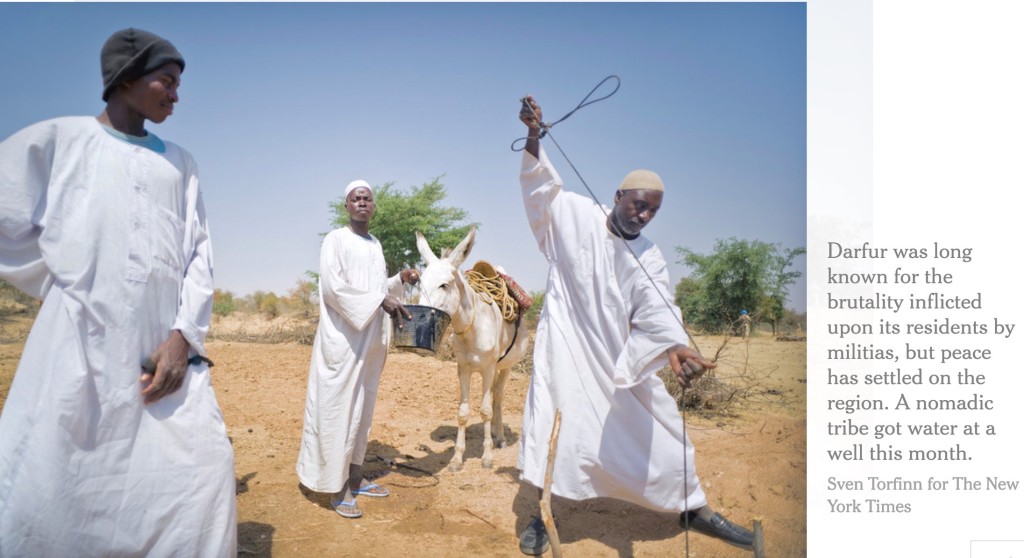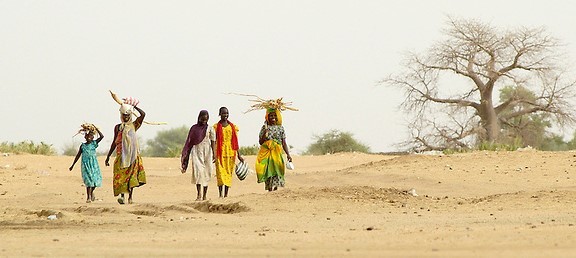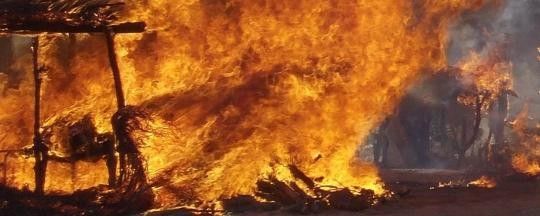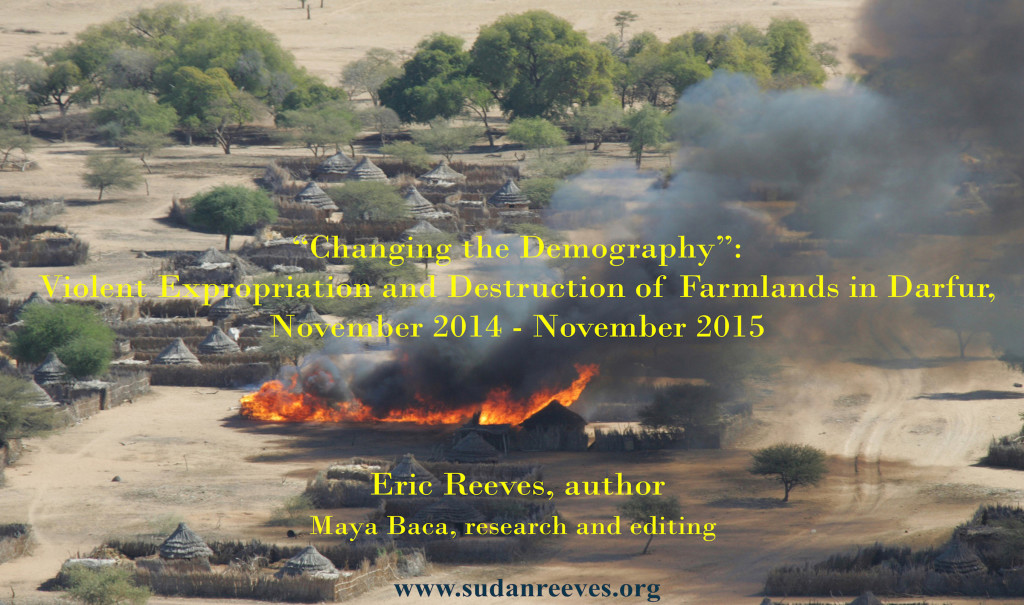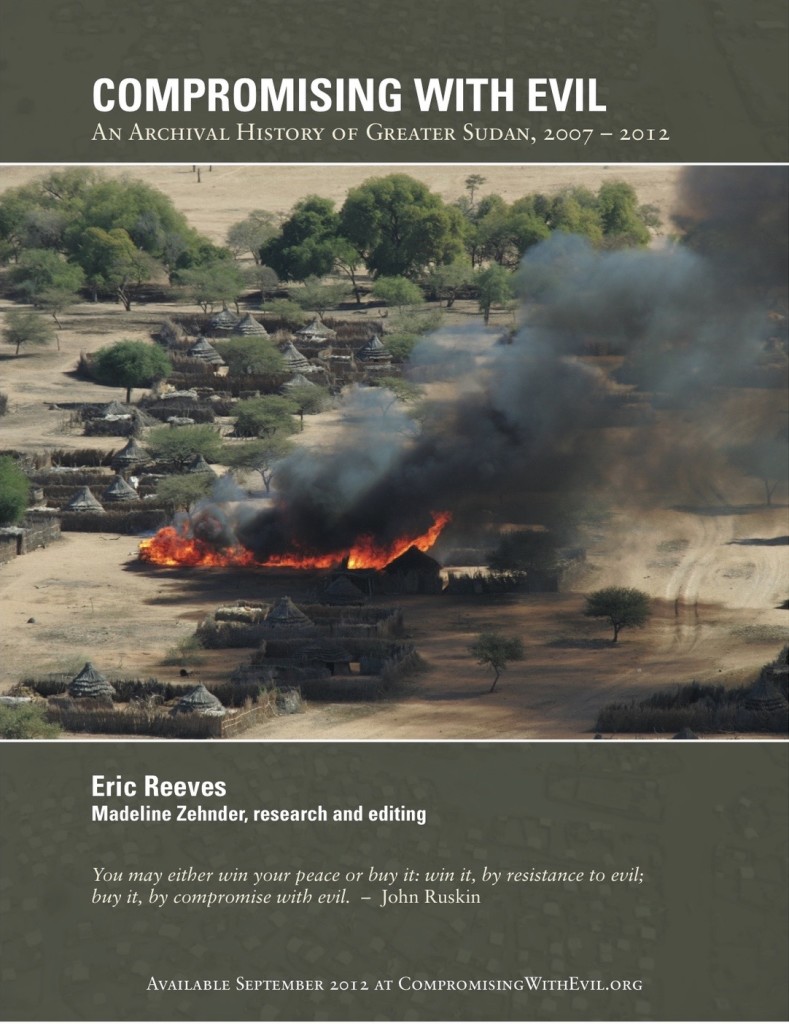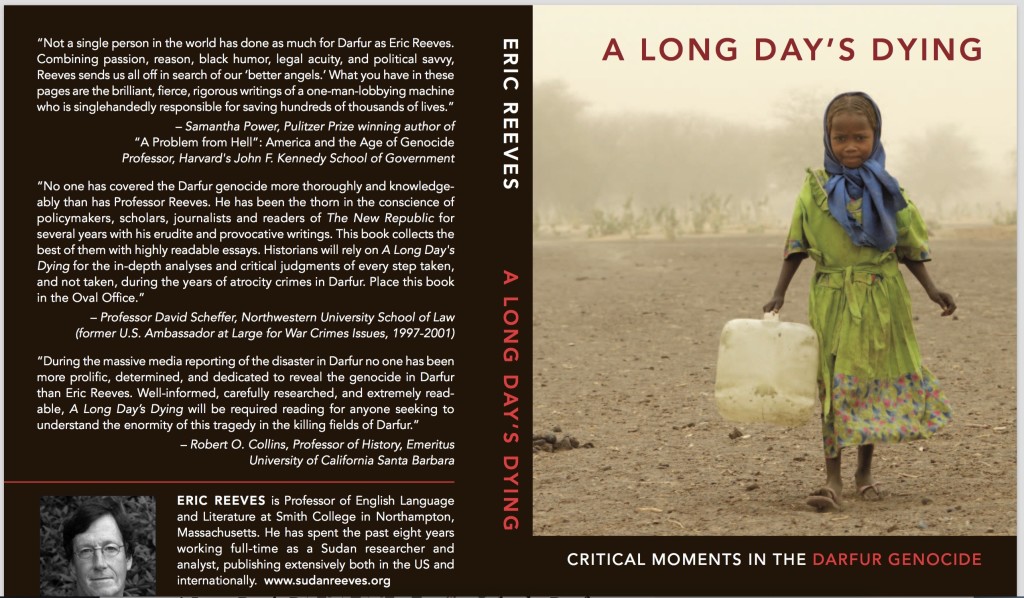On the Invisibility of Darfur: Causes and consequences over the past five years (Part Two)
Eric Reeves | October 29, 2016 | http://wp.me/p45rOG-1Xy .
As I argued in the first part of this large retrospective—covering the past five years of Darfur’s desperate, ongoing agony—human suffering and destruction continue without respite or diminishment. On the contrary, the past five years have seen an extraordinary acceleration of Khartoum’s genocidal counter-insurgency in the region, one that has been rendered invisible by the National Islamic Front/National Congress Party regime. Human rights groups are barred from the region, as are independent journalists from all news organizations, large and small. The reports from the UN/African Union Mission in Darfur (UNAMID) are contemptible in their inadequacy and mendacity, and human rights reporting of necessity requires reports from the ground inside Darfur reaching outside sources, primarily Radio Dabanga and Sudan Tribune.
My ambition for many years now has been to make Darfur’s realities too terrible to ignore—to provide detailed, well-sourced accounts of violence, displacement, destruction, and vast human suffering. My examination of the past five years, by means of extensive excerpts from analyses defining of each year in this period, is an effort to provide in lengthy, but still accessible fashion a compendium that is detailed and representative—that makes clear just how much the world has chosen not to see.
As I note in Part 1 of this compendium, there have been serious obstacles to a clear understanding of what is happening in Darfur. I argued that the news organization with the greatest obligation to report more fully on what I have assembled here by way of human rights reports, sources on the ground, and Sudanese news dispatches is The New York Times, the news organization with the last dateline from Darfur outside one the three major cities of Darfur (Nyala, el-Fasher, and el-Geneina). The obligation rests heavily on the Times because of its extraordinarily distorted reporting on Darfur in February 2012, reporting that convinced many that the catastrophe in Darfur had ended. From the village of Nyuru (near Mornei [also Murnei], a significant town in West Darfur), the Times reported on February 26, 2012 that peace was descending on Darfur. A prominent photograph accompanying the dispatch carried an astonishing caption:
“…peace has settled on the region…”
But the conclusion drawn by the caption to this photograph was not simply wrong, it was grotesquely wrong. The Times’ correspondent had been taken to a “Potemkin Village,” certainly thronging with security officials and their informants. The same was true when UNAMID attempted to investigate the mass rapes of women and girls at Tabit, North Darfur, in November 2014. A subsequent investigation by Human Rights Watch established, on the basis of more than 50 interviews with residents or former residents of Tabit, not only that more than 220 girls and women had been raped by regular Sudan Armed Forces soldiers—on the orders of the nearby garrison commander—but that UNAMID investigators, when they were finally allowed into Tabit, found only terrified people unwilling to say anything about the onslaught of sexual violence.
More than 220 girls and women were raped in Tabit, North Darfur from October 30 – November 1, 2014 by regular SAF soldiers, acting on orders from the nearby army garrison
Part One of this survey of the past five years (http://wp.me/p45rOG-1WS) focused only on 2012—the year of the infamous Times dispatch. Part Two covers (individually) the years 2013, 2014, 2015, and 2016 to date. The vast bulk of materials—both archival and analytic—are contained in Annexes for each of these years:
Annex A: 2013 | http://wp.me/p45rOG-1Xt
Annex B: 2014 | http://wp.me/p45rOG-1Xu
Annex C: 2015 | http://wp.me/p45rOG-1Xv
Annex D: 2016 to date | http://wp.me/p45rOG-1Xw
What I offer in the present schematic overview is a year-by-year synopsis of the major developments defining Darfur’s increasing violence and displacement. Since the Times’ dispatch of February 2012, more than 1.4 million people have been newly displaced by violence or the threat of violence. In 2016 the figure may exceed 300,000 just in the region of the Jebel Marra massif (Central Darfur), if we take seriously the estimate by Amnesty International that perhaps 250,000 people had been displaced by Khartoum’s brutal offensive by early September 2016 (“Scorched Earth, Poisoned Air: Sudanese Government Forces Ravage Jebel Marra, Darfur,” Amnesty International | 109 pages; released September 29, 2016). The onslaught began in January 2016, and continues in the form of aerial bombardment that either targets civilians and civilian villages with no military presence, or is simply indiscriminate in bombing human beings.
In the five years preceding the Times’ dispatch, another 1.4 million people had been displaced as the world moved with painful slowness to dispatch the UN/African Union “Hybrid” Mission in Darfur (UNAMID). UNAMID would prove an almost immediate failure in taking up its civilian protection mandate (officially in January 2008); and despite a Status of Forces Agreement signed by the Khartoum regime in February 2008, UNAMID found itself—and finds itself still—denied access to those areas where civilian destruction and displacement are greatest.
Diplomatic failure has marked at every turn the efforts of a corrupt “African Union High-Level Implementation Panel” led by former South African president Thabo Mbeki. The Sudan policies of the Obama administration—diplomatically, politically, economically—have been dictated by the lust within the U.S. intelligence community for counter-terrorism intelligence, intelligence that the regime itself has been caught out deriding in leaked minutes (August 31, 2014 | http://wp.me/p45rOG-1wk ).
Thabo Mbeki has failed Darfur catastrophically during his tenure as head of the “African Union High-Level Implementation Panel” (“implementing” Mbeki’s 2009 “roadmap to peace in Darfur”—a roadmap that led ultimately to the disastrous “Doha Document for Peace in Darfur.”
For its part, the European Union has accelerated its rapprochement with Khartoum for both self-interested economic reasons and as a means of staunching the flow of African emigrants to Europe. It apparently does not matter that this means providing high-tech surveillance and registration technology to a regime dependent for its survival on some of the world’s most dangerous security services (the National Intelligence and Security Services most broadly, but Military Intelligence and others as well). Germany is willing to construct on behalf of the European Union “closed camps” in Sudan—i.e., concentration camps, which will “concentrate” people on the basis of ethnicity, nationality, geographical origin, and perhaps religion.
What is most perverse about the invisibility of Darfur today is that it comes after a concerted civil society campaign of several years in the U.S. and elsewhere to make visible and halt the 21st century’s first genocide and now the longest in well over a century. I helped to begin this effort with an op/ed in The Washington Post in February 2004—eight years almost to the day prior to the Times’ dispatch from Nyuru in February 2012. Two years later (2014) it seemed to me appropriate to re-distribute that original Darfur op/ed, given the title appended by the Post, “Unnoticed Genocide”:
“Unnoticed Genocide,” Washington Post (February 25, 2004), by Eric Reeves | http://www.sudanreeves.org/Sections-article53-p1.html (painfully little of this ten-year-old account needs updating)
In the remote Darfur region of western Sudan, a human disaster is accelerating amid uncontrolled violence. The United Nations’ undersecretary general for humanitarian affairs has called it probably “the world’s greatest humanitarian catastrophe.” Doctors Without Borders has observed “catastrophic mortality rates.” And yet, so far as most of the world is concerned, it isn’t even happening.
There have been what Amnesty International calls “horrifying military attacks against civilians” throughout Darfur by the Sudanese government and its militias. The government has sent bombers to attack undefended villages, refugee camps and water wells. The United Nations estimates that 1 million people have been displaced by war and that more than 3 million are affected by armed conflict.
Yet Darfur has remained practically a non-story in international news media. One big reason is the fact that the central government in Khartoum, the National Islamic Front, has allowed no news reporters into the region and has severely restricted humanitarian access, thus preventing observation by aid workers. The war in Darfur is not directly related to Khartoum’s 20-year war against the people of southern Sudan. Even so, military pressure from the Darfur insurgency that began a year ago has been instrumental in forcing the regime to commit to peace talks with the south.
But there are now signs that these talks have been viewed by Khartoum only as a way to buy time to crush the insurgency in Darfur, which emerged, inevitably, from many years of abuse and neglect. Despite efforts by the regime to stop it, a widening stream of information is reaching the international community, from tens of thousands of refugees fleeing to Chad (which shares a long border with western Sudan), and according to accounts from within Darfur. Amnesty International has led the way in reporting on Darfur; one of its recent releases speaks authoritatively of countless savage attacks on civilians by Khartoum’s regular army, including its crude Antonov bombers, and by its Arab militia allies, called “Janjaweed.”
An especially disturbing feature of these attacks is the clear and intensifying racial animus. This has been reported by Amnesty International, the International Crisis Group and various U.N. spokesmen. The words “ethnic cleansing” have been used by U.N. officials and diplomats. This term, which gained currency during the breakup of Yugoslavia, is but another description for genocide. But whatever they are called, the terrible realities in Darfur require that we attend to the ways in which people are being destroyed because of who they are, racially and ethnically — “as such,” to cite the key phrase from the 1948 U.N. Convention on Genocide.
Darfur is home to racially and ethnically distinct tribal groups. Although virtually all are Muslim, generalizations are hard to make. But the Fur, Zaghawa, Masseleit, and other peoples are accurately described as “African,” both in a racial sense and in terms of agricultural practice and use of non-Arabic languages. Darfur also has a large population of nomadic Arab tribal groups, and from these Khartoum has drawn its savage “warriors on horseback” — the Janjaweed — who are most responsible for attacks on villages and civilians.
The racial animus is clear from scores of chillingly similar interviews with refugees reaching Chad. A young African man who had lost many family members in an attack heard the gunmen say, “You blacks, we’re going to exterminate you.” Speaking of these relentless attacks, an African tribal leader told the U.N. news service, “I believe this is an elimination of the black race.” A refugee reported these words as coming from his attackers: “You are opponents to the regime, we must crush you. As you are black, you are like slaves. Then the entire Darfur region will be in the hands of the Arabs.” An African tribal chief declared that, “The Arabs and the government forces . . . said they wanted to conquer the whole territory and that the blacks did not have a right to remain in the region.”
There can be no reasonable skepticism about Khartoum’s use of these militias to “destroy, in whole or in part, ethnic or racial groups” — in short, to commit genocide. Khartoum has so far refused to rein in its Arab militias; has refused to enter into meaningful peace talks with the insurgency groups; and, most disturbingly, has refused to grant unrestricted humanitarian access. The international community has been slow to react to Darfur’s catastrophe and has yet to move with sufficient urgency and commitment. A credible peace forum must be rapidly created. Immediate plans for humanitarian intervention should begin. The alternative is to allow tens of thousands of civilians to die in the weeks and months ahead in what will be continuing genocidal destruction.
In fact, given the lack of effective international action, the death toll is not to be measured in “tens of thousands” but rather hundreds of thousands. In August 2010—six years ago—I used all extant data and mortality reports to estimate a death toll from the direct and indirect causes of violence, in Darfur and eastern Chad, of 500,000 (see QUANTIFYING GENOCIDE: Darfur Mortality Update, August 6, 2010 | http://wp.me/p45rOG-AB). We have no idea how many have died subsequently because no UN agency or nongovernmental organization dares to aggregate and disseminate data bearing on the issue. But given the crude data we do we have or to which we might reasonably extrapolate, particularly given the violence in East Jebel Marra and Jebel Marra over the past fours years, it is impossible not to conclude that at least another 100,000 people have died. The most reasonable figure to use in speaking about mortality in Darfur at this point in the genocide, in my view, is “more than 600,000.” And yet virtually all news media, in all reports, use the UN figure from April 2008 of “300,000”—rarely noting that the estimate by John Holmes, head of UN humanitarian offices, is now eight and a half years old.
More than 600,000 civilians have died in Darfur and eastern Chad as a direct or indirect consequence of genocidal violence—the overwhelming majority of them from the non-Arab/African tribal populations of Darfur.
How has the death toll grown year by year? What has been the nature and intensity of violence directed against non-Arab/African tribal populations in Darfur? What have been the consequences of Khartoum’s continuing war of attrition against humanitarian efforts in the region? What has been the effect of deploying the “Rapid Support Forces” (RSF) as a much more heavily armed and supplied militia force? The RSF has been openly celebrated by the regime, as the roughly designated Janjaweed were never even acknowledged, even when these earlier militia forces were closely coordinating with the regime’s regular troops (the Sudan Armed Forces, SAF) in massive, ethnically-targeted village destruction.
The major topics organizing the years 2013 – 2016, in Annexes that will appear seriatim, are:
Annex A: 2013 | http://wp.me/p45rOG-1Xt
• Character of aerial bombardment of civilian targets;
• Mortality assessment;
• Assessment of scale of human displacement in Darfur and eastern Chad;
• Deteriorating security for civilians inside and outside camps for displaced persons;
• Detailed analysis of one week of reports of character of civilian life;
• Reduced humanitarian capacity and access in Darfur;
• Khartoum’s responsibility for killing of UNAMID peacekeepers;
• Continuing disappearance of Darfur from international eyes (Arabic translation of one key article);
Annex B: 2014 | http://wp.me/p45rOG-1Xu
• Detailed timeline of events in 2014;
• Leaked minutes of meeting of senior regime military and security officials (Khartoum | August 31, 2014); the implications of these fully verified minutes are terrifying (original Arabic text as well as English translation are linked here);
• Withheld UNICEF malnutrition data (leaked to Nicholas Kristof of the New York Times);
• Deteriorating security and humanitarian conditions; Khartoum’s targeting of humanitarian organizations and personnel;
• Growth of the Rapid Support Forces as the “new Janjaweed”;
• Survey of UN and African Union deceptions about conditions in Darfur;
• Implosion of Sudan’s economy and implications for the marginalized populations of the country, particularly Darfur;
• Detailed examination of plight of Darfuri refugees in eastern Chad;
• Motivations for Obama administration Sudan policies;
• Satellite photography revealing extent of village destruction during preceding months (Satellite Sentinel Project);
• Growing political instability and consequent increase in regime repression;
• Continuing use of rape as a weapon of war against girls and younger women;
Annex C: 2015 | http://wp.me/p45rOG-1Xv
• Leaked minutes of two meetings of senior regime military and security officials (Khartoum | June 3, 2014 and July 1, 2014—the latter including President al-Bashir);
• Multiple and lengthy compendia of dispatches from Radio Dabanga, by far our most comprehensive source of information about current conditions in Darfur;
• Neglect of Darfur by Western journalism;
• Human Rights Watch report on mass rape of women and girls at Tabit, North Darfur (October 30 – November 1, 2014) (report issued February 2015);
• Human Rights Watch report on the Rapid Support Forces: detailed and highly authoritative account of the brutal predations of the RSF and the clearly genocidal task set for these militia forces by Khartoum (report issued September 2015);
• Comments of regime Vice President Sudanese Second Vice President Hassabo Mohammed Abdel Rahman on the goal of the 2015 Sudan Armed Forces and Rapid Support Forces offensive against the African tribal populations of East Jebel Marra: “we want to clear the area of insects…” (December 2014, cited by Human Rights Watch);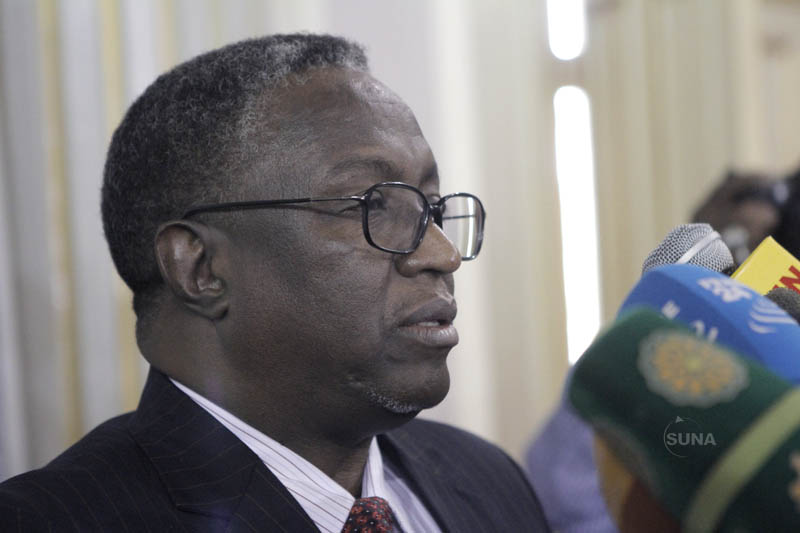
Regime Vice President Sudanese Second Vice President Hassabo Mohammed Abdel Rahman
• Growing rapprochement between Khartoum and the Obama administration;
• Scale and continuing growth of violent displacement of African farmers; see “Changing the Demography”: Violent Expropriation and Destruction of Farmlands in Darfur, November 2014 – November 2015 | December 2015—includes framing analysis, extensive data spreadsheet covering all reported incidents of violence against farmers and farmland in Darfur, as well as a detailed mapping of these data onto three maps encompassing all of Darfur (monograph translated into Arabic) | http://wp.me/p45rOG-1P4;
• Continuing deliberate aerial bombardment of civilian targets;
Annex D: 2016 to date | http://wp.me/p45rOG-1Xw
• Khartoum’s Jebel Marra offensive, beginning in January 2016; extensive report by Amnesty International (September 29, 2016): “Scorched Earth, Poisoned Air: Sudanese Government Forces Ravage Jebel Marra, Darfur”;
• Use of chemical weapons in Jebel Marra offensive; established beyond reasonable doubt by Amnesty report; failure of the international community to respond to these realities;
• Accelerating use of rape as a weapon of war; see “Continuing Mass Rape of Girls in Darfur: The most heinous crime generates no international outrage” | January 2016| http://wp.me/p45rOG-1QG(covering the period 2014 – 2015);
• Continuing diplomatic incompetence and corruption of African Union mediator Thabo Mbeki;
• Dishonesty and deception on the part of U.S. State Department, as revealed by “Wikileaks”;
• Deteriorating conditions facing Darfuri refugees in eastern Chad;
• Growing efforts by Khartoum regime to compel displaced persons from their camps to their villages (typically not existing or occupied by Arab marauders or settlers);
• Continuing corruption of U.S. Sudan policy by demands of Obama administration intelligence community;
• Accelerating rapprochement between Khartoum and the countries of the European Union (and the UK);
• Continuing aerial bombardment of civilian targets in Darfur, especially East Jebel Marra and the Jebel Marra massif;
I have also written at length on Darfur in two previously published books:
• Compromising with Evil: An archival history of greater Sudan, 2007 – 2012 (with Review Commentary)
• A Long Day’s Dying: Critical Moments in the Darfur Genocide (Key Publishing | 2007)
http://sudanreeves.org/wp-content/uploads/2015/11/%E2%80%A2Final-Book-Cover1.pdf
